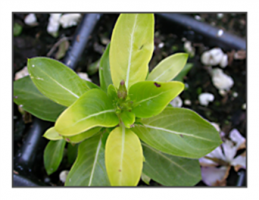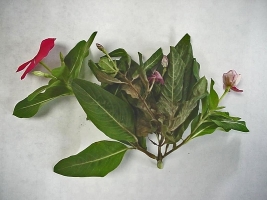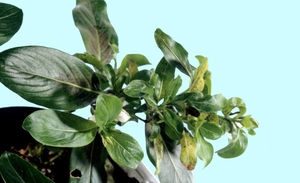General Information
It is a perennial herb and is found in two basic forms i.e. Vinca major and Vinca minor. It is branching and erection herb. The plant has glossy leaves having oval to oblong shape. The leaves are arranged in opposite manner having pale midrib and short petiole. Flowers mainly have 5 petals having pale pink or purple eye in the centre. The drugs of this crop are used to cure leukemias, lymphomas and childhood cancers and some other cancerous and non-cancerous conditions. It is basically originated from Madagascar and is grown in throughout India.






















